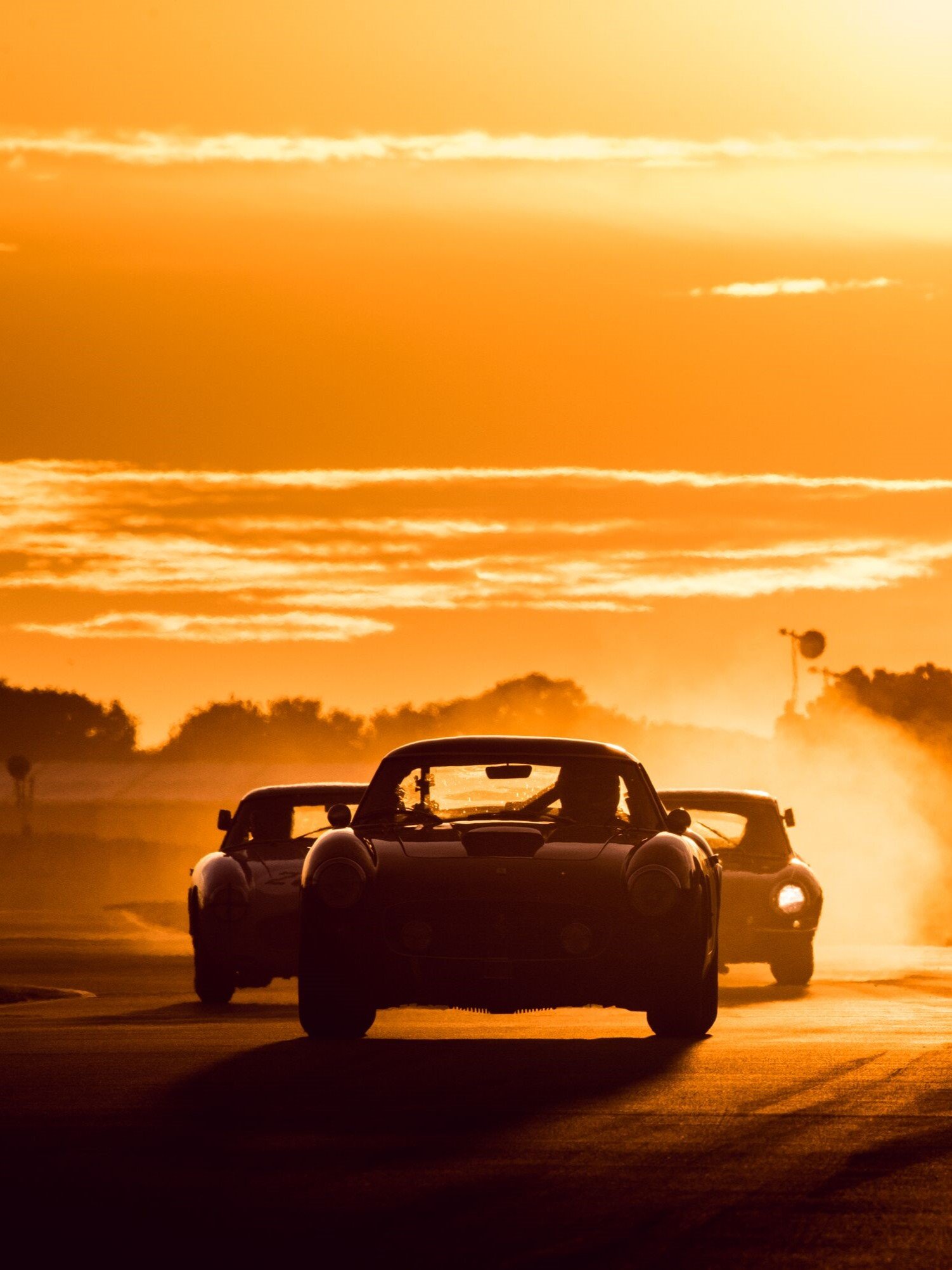The seven best Williams F1 cars
Williams is one of those names that’s intimately associated with the history of F1. The team’s successes through the 1990s and 1980s can be described at times as dominance, so there are long periods were a list of the best cars on the grid is just a list of what Williams had produced. Hard times have befallen the team from Grove, but with a new era on the horizon that might hopefully put it toward the top of the pile again, we decided to look at Williams’ greatest F1 machines.

FW07
It would be impossible to start this list without the car that took Williams Grand Prix Engineering’s first ever F1 championship. The FW07 was only the second car that the company had penned and was almost immediately a success.
Debuting in 1979, like most F1 cars of its era, there were some teething problems – to the tune of five retirements in its first three races. But on race five, the British Grand Prix, Clay Regazzoni took the team’s first F1 win. Alan Jones followed up with three wins in the next four races and Williams took second in the Constructors’ Championship. Six more wins followed in 1980 and Williams and Alan Jones were F1 champions for the first time.
The FW07 took many of the ground effect concepts Lotus had developed and refined them. Continuing to make them work while Lotus floundered with its overly complicated 80 and 88. Powered by a Cosworth DFV (naturally) the Saudia sponsored FW07 developed through to C spec would claim a second consecutive Constructor’s Crown in 1981. One of only two Williams machines ever to do so.

FW11
Williams won another F1 championship in 1983, but it was a slightly fortuitous one. Keke Rosberg clinching his sole F1 crown with a single victory – the only driver ever to do so – as the FW08 failed to match its predecessors's dominance.
It would not be until the FW11 that Williams pushed its way back to the top of the championship. It was quite clearly the class of the field in 1986, powered by an incredible turbocharged Honda engine, winning nine out of 16 races. Williams clinched the Constructors’ Championship but the direct battle between drivers Nelson Piquet and Nigel Mansell (and a touch of bad luck) meant McLaren’s Alain Prost pipped them to the Drivers’ title.
In 1987 the FW11 dominated completely. Nine more wins brought a second teams' title while Piquet finished on the podium 11 times to clinch his third and final title. The FW11’s wins came more through solid engineering and high-quality aerodynamics than anything outrageous. Complete with an engine that was the class of the field Williams was almost untouchable. At the end of ’87 Piquet left in a huff and Honda’s engines went to McLaren, Williams wouldn’t win a single race in 1988.

FW14B
What followed was a bit of a wilderness period for Williams. The team that had become used to winning from just its third season in the sport only managed to win four more races in the next three seasons.
After these porous years, Williams acted, adding Adrian Newey to its engineering team to pen cars alongside stalwart Patrick Head. The young Englishman’s impact was immediate. His first car was the FW14, which came complete with a screaming Renault V10 and made its debut in 1991. After some teething issues, the FW14 was the dominant car of the second half of the season, with McLaren and Ayrton Senna only securing a pair of titles thanks to superior reliability.
In 1992 Williams had fixed its problems with the FW14. Now labelled the FW14B and looking like pretty much the same car, the looks and livery hid some big changes. The “B” had a new gearbox and tweaked aero, but more importantly, traction control systems and active suspension were added. Mansell won five races in a row to start the 1992 season and eight of the first 10 rounds. He was finally champion and Williams was back on top of the pile.

FW15
For 1993 Williams bolstered its driving line-up by adding then three-time champion Alain Prost. That led to Mansell’s exit for IndyCar (how much of that was over money and how much a huff at Prost’s entrance is disputed) but, with Newey still in design control and future Mercedes head Paddy Lowe now running the complex electronic systems, Williams remained in good hands.
The FW15C was easily the most sophisticated car Formula 1 had ever seen and, because many of the things that made it so fast would soon be banned, it probably remained so for nearly two decades. While the FW14 was a passive-designed car retrospectively fitted with active suspension, the FW15 was entirely designed around its high-tech innards.
With the electrics miles ahead of its rivals, work could also be done on the aero, improving the FW15 in almost every way over its predecessor, and ABS was added for the first time. In Prost’s hands, it dominated. The Frenchman had won the title with multiple races to spare before Damon Hill added another three wins to help clinch the Constructor’s crown. By the end of the season, Williams exactly doubled nearest rival McLaren’s points.

FW18
Choosing which mid-1990s Williams was best is a bit like throwing darts at a board made up of just treble 20s. In 1994 the FW16 could very nearly have won the crown if it weren’t for Michael Schumacher’s efforts. In 1995 the FW17 was the superior car to Benneton’s B195, but Damon Hill’s mind lost him the crown.
But the FW18 was peerless. Adrian Newey’s final wholesale design for Williams, no other car even got close to matching it. It was a very similar design to the FW17, but with a lot of refinement over the ‘95/’96 winter. With Newey’s superior aero designs and a lower centre of gravity than its predecessor, 9,000km of winter testing were completed by Hill alone to ensure it was in perfect nick.
It helped that the 3.0-litre Renault V10 in the back of the car wasn’t matched by any other on the grid and the FW18 won 12 of 16 races entered. After strolling to the title once more Newey, fed up with what he perceived as a lack of control, walked out for McLaren.

FW25
Newey had put enough design into the following FW19 that it took what would be Williams’ final F1 titles in 1997. But without Newey, and with Renault departing too after ’97, Williams found itself floundering at the end of a decade it had dominated.
The answer to Williams’ problems came in the shape of an engine supply deal with BMW. The German manufacturer re-entered F1 in 2000 for the first time since the 1980s and did so with force. After a couple of years, the heavily-developed P-series would be regarded as the best on the grid. Williams returned to winning way in 2001 with the P80-powered FW23, and pushed its way up the grid over the following seasons.
In 2003 the FW25, with its P83 engine, was arguably the pinnacle of the BMW/Williams partnership. At first though, it was terrible. Neither Juan Pablo Montoya or Ralf Schumacher liked the FW25 until Michelin redesigned its tyres to better suit the car. Provided with the best rubber the two Williams cars became regulars on the podium, clinching four wins from six races. After Bridgestone protested the new tyres, the FW25 fell back again, struggling to find a proper rhythm with the thinner front rubber. But during that wide-tyred sweet spot in the middle of 2003 it was the class of the field. Even with the changes, Montoya was still just 11 points behind Michael Schumacher by season end.

FW36
Since the FW25 Williams has won the sum total of two races, and those were around a hundred races apart. So it seems odd to include any of the team’s machines from the 2010s in this list. But in 2014 Williams harnessed a rule change to put itself back toward the top of the order.
Everyone will forever remember 2014 as the first year of Mercedes F1 dominance, or for Daniel Ricciardo showcasing his talent ahead of a subdued Sebastian Vettel. But the second fastest car on the grid was the Williams FW36. After securing three podiums in the previous eight seasons, Valtteri Bottas and Felipe Massa secured nine in 2014 alone. Helped again by having by far the best power unit on the grid – again German, this time from Mercedes – Williams took advantage of a complete rules overhaul to vault itself up the grid.
Swathed in one of the best liveries of recent times – thanks Martini – the low-drag FW36 was one of the fastest cars on the grid in a straight line. Somehow victories eluded the team, thanks in part to some bad luck, allowing Red Bull to still take second, but Williams finished 104 points clear of Ferrari at the end of the season. The FW36 took pole at Austria and could arguably have taken a couple of victories with better luck and strategy.
Images courtesy of Motorsport Images.
Williams
List
FW07
FW14B
FW18
FW25
FW36
FW15
FW11































































